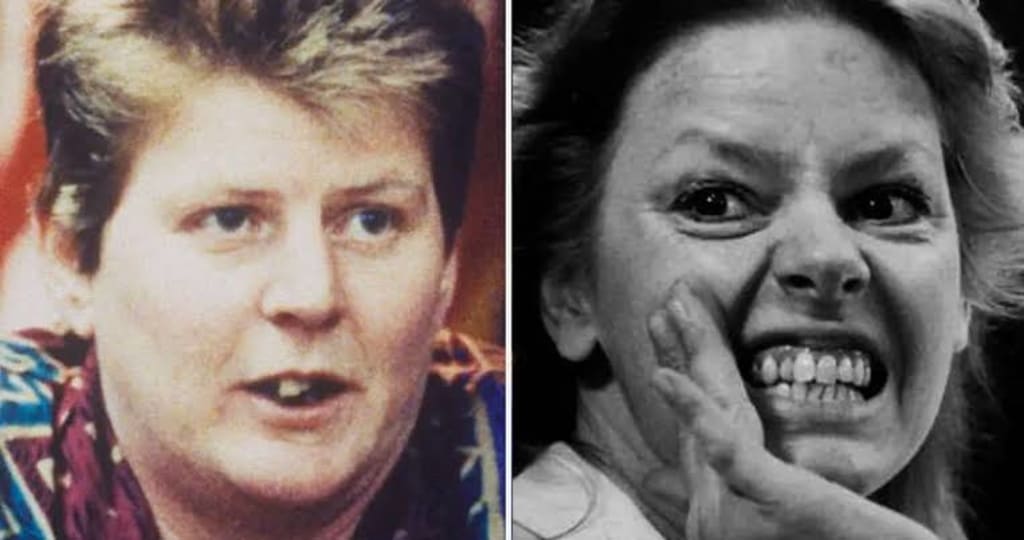Infamous Serial Killer: Aileen Wuornos
Aileen Wuornos, a troubled woman with a traumatic upbringing, became a notorious serial killer, murdering seven men in Florida in 1989.

Aileen Wuornos one of the most infamous female serial killers in history captivated the world with her troubled life and chilling crimes. Born on February 29, 1956, in Rochester, Michigan, Wuornos life took a tumultuous course that ultimately led her down a path of violence and murder. Her story is a complex blend of childhood trauma, mental illness, and societal neglect that sheds light on the dark corners of humanity.Wuornos' early life was marked by instability and adversity. Raised by her grandparents after her parents' tumultuous relationship, she faced abuse and neglect, which likely played a role in shaping her troubled personality. At the age of 14, she engaged in sexual activities in exchange for money, and by 15, she was pregnant and living on the streets. These early experiences exposed her to a world of danger and exploitation, sowing the seeds for her later actions.
In 1989, Wuornos' life took a deadly turn when she began a series of murders that would eventually claim the lives of seven men. The victims, all middle-aged white men, were found shot to death in remote areas of Florida. Wuornos claimed that she had killed them in self-defense, asserting that they had attempted to rape her during her work as a sex worker. However, her inconsistent stories and the manner in which the victims were killed raised suspicions.
Wuornos was arrested in 1991 after a statewide manhunt, and during her trial, her traumatic past and history of mental illness were brought to light. Her defense team argued that her traumatic experiences and a possible combination of borderline personality disorder and antisocial traits could have contributed to her actions. Nevertheless, she was convicted and sentenced to death for six of the murders. Her trial and subsequent appeals drew international attention and sparked debates about mental health, the death penalty, and the circumstances that lead individuals to commit heinous acts.
While incarcerated, Wuornos continued to gain notoriety. She gave numerous interviews and corresponded with journalists and supporters, revealing her perspective on her crimes and her motivations. Some sympathized with her, seeing her as a product of a harsh upbringing and a system that had failed her. Others condemned her, seeing her as a cold-blooded killer who used self-defense claims as a cover for her violent tendencies.
In 2002, Aileen Wuornos was executed by lethal injection, ending her life and reign of terror. Her execution marked the conclusion of a highly publicized case that had captured the public's fascination for over a decade. However, the debates surrounding her life and crimes persist. Some view her as a victim of her circumstances, highlighting the systemic failures that contributed to her downfall. Others maintain that regardless of her past, she was a remorseless murderer who deserved the punishment she received.
Aileen Wuornos' legacy remains complex and polarizing. Her life story has inspired books, documentaries, and even a Hollywood film Monster in which Charlize Theron portrayed her. The film offered a glimpse into her world and struggles, sparking discussions about the limits of empathy and the nature of criminality. Wuornos' case also prompted discussions about the treatment of women in the criminal justice system and the impact of childhood trauma on individuals' lives.To sum up, Aileen Wuornos had a sad life. She faced a lot of problems and mistreatment, which led her to become violent and kill people. Her situation shows how mental health issues, society not caring, and doing bad things are connected. This makes people talk about who should be blamed and what should happen to them. Some see her as someone who had no choice, while others think she chose to be dangerous. Her story shows how people can be complicated and how their lives can change because of different things.





Comments (1)
I am convinced that the first murder was an act of self defense. Look into the history of the man she killed. Once the first murder was committed, she figured that no one would believe her and killed any man that looked at her sideways. I believe that she was innocent of at least one murder and guilty of the others.